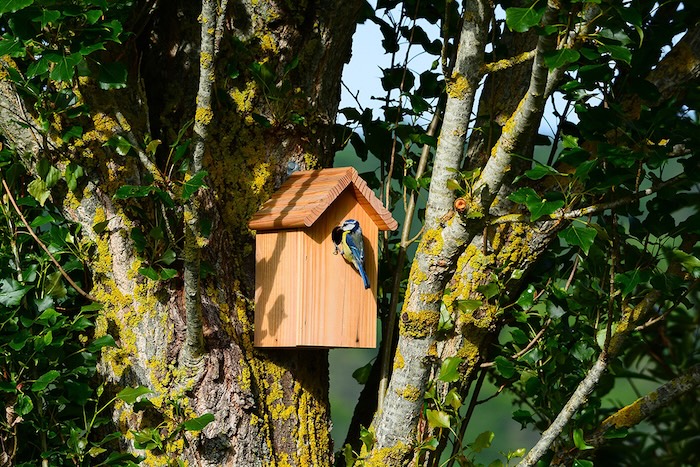
Is blue the colour of love?
By Rachel Shaw
Lincolnshire Wildlife Trust
For at least a week, it seemed like every morning when I open the curtains, there weret wo blue tits on the tree outside.
I could hear their trilling “tsee-tsee-tsee” calls. It was still cold and felt more like winter than it had done for most of the season, but there were only two of them.
They were not in a flock moving from tree to tree, from garden to garden in search of food.
I couldn’t help imagining that they were a pair - a blue tit couple that were already in search of a home. I was hopeful that they’ll make their home in my garden but was wishful thinking.
Blue tits pair up in February and start building their nests. When people are buying red roses, chocolates and cheesy cards, many of our garden birds are getting together too.
Although for some species it starts a lot earlier, the folklore around Valentine’s Day is that it’s the start of the spring mating season for birds. Collared doves are cooing, robins are bobbing in unison, you get the picture. So how do blue tits choose a mate?
It could be down to colour. Like most birds, blue tits can see ultra-violet (UV) light. Studies have shown that the blue crown on their heads glows brightly under UV light. The brightness of the feathers is thought to provide a variety of signals including choice of mate. Male blue tits have been shown to choose females with brightly coloured crowns as they make fitter mothers.
Don’t be mistaken though, with blue tits (and many other birds) it’s not true love! As the female builds the nest with moss, wool, hair, feathers and spider webs, the male blue tit will follow her around. Not to help with the home making but to make sure that no other males mate with her. Even so, it’s estimated that over 40% of blue tit nests contain at least one chick that is reared by a male that is not its genetic parent.
Blue tits like cosy cavities as nests – a hole or crack in tree, old woodpecker nests. They are also quick to investigate human-made holes – they readily take to nest boxes but will also check out gaps in walls or hollows in metal gates. If you have a nest box in your garden, Valentine’s Day is when you should be cleaning out the old nesting material ready for the season ahead.
The timing for blue tits is tricky. They need to synchronise breeding and therefore the hatching of their chicks to coincide with the peak availability of their food – tiny caterpillars that have also hatched to feed on the newly unfurled leaves of trees. And unlike some birds such as blackbirds and robins, blue tits will only raise one brood of chicks each year.
Although life is tough for blue tits, unlike so much of our wildlife, their numbers have actually increased since the 1970s. If you feed the birds in your garden, have put up a nest box and garden without using pesticides that kill their food; you have played a role in helping these delightful little birds.


